Where tourism stops
Namibia / 22 - 27 September 2019
It was not in our plan, and certainly not on the route, the Khaudum National Park. From a Namibian we hear such an enthusiastic story about one of the most remote areas in Africa that we spontaneously decided to visit it. We cross no less than 955 km through Namibia to reach the park. The interior is as varied as the landscapes in the west, so averse to changes. Every few hundred kilometers only one variable seems to change in the view. For example, the road changes from a beautiful white sandy road to a maize-yellow gravel road surface. Due to the lack of places of interest, tourists cannot be seen in any fields or roads. We are also the only one on the campsite in the last place before the National Park. We had hoped to meet other travelers to ride together through the nature reserve, with elephants, lions and leopards. We are completely thrown back on ourselves.
Khaudum, the forgotten wilderness
The park receives more elephants per year than visitors, writes the brochure. It is an open park for wild animals, who can walk in and out freely. There are official requirements for tourists, such as driving at least two cars together, provisions for three days, 120 liters of fuel and 50 liters of water. We get the urgent advice not to drive in the dark. And keep a distance from the elephants, especially in situations where they feel threatened or confined.
Not knowing whether we get single-person access to the park, we drive down the endlessly long access road to the park. It is already 12.00 hour when we reach the gate. We can immediately adjust our plan to drive a day in the south of the park. The first campsite is closed. We can only spend the night at the northern campsite. "The route of 120 km can certainly be driven in 4 á 5 hours," according to the park's and also gatekeeper's estimate. A very optimistic estimate, it turns out later. The absence of a second car or the required fuel and water is not asked. Apparently a little less important.
Wildlife spotting
The sun is high in the sky. The animals are also sheltered from the warm rays of the sun. There is a zebra on the track that has not won the battle with a predator. Then we are more lucky, at a waterhole there is a herd of elephants. The family is already walking away while the leader wanders a bit at a deserted lake. He also seems to run away, but turns around again. The dominant elephant spreads very wide with its large flapping ears and stomps loudly back to the water. Two vultures on the other side of the lake shave off quickly. The action of the elephant leader is just as pointless as that of an old grumpy man who drives annoyed preschoolers out of a playground. In the travel guide we read that the elephant is the only animal that attacks a car. He can already decide on such an action at 250 meters. If the evil mammal comes your way, the advice is to reverse slowly. Once a YouTube video made a deep impression on me, a furious elephant keeps bumping against a side of an off-road vehicle so that it tilts. I don't have to think about that happening to us, only in the big park.
Enclosed by the elephants
It is already afternoon and we still have a long route through deep sand ahead. We do not take breaks and hope to reach the campsite on time. Then we see elephants again at a waterhole. Magnificent. Onno stops the car and turns it off. If we look closer, we see that the entire horizon is filled with elephants. They are multiple herds. One herd is drinking in the lake under the supervision of the large threatening matriarch, who ensures that they do not have to share the water with other herds. The other herd washes away in the sand. The continuation runs our way between these two herds. We are waiting, hoping that at least one herd will leave at once. However, it looks like it will take a while. A little farther on the left is waiting for her watering. We are surrounded by certainly 50 elephants. Absolutely impressive. We enjoy, but with the provision of time, our concern also increases whether we will reach the campsite before dark.
Help from unexpected sources
Then a point of light appears on the horizon, literally and figuratively. A bakkie, an African for off-road vehicle with an open body, drives us across the water. They are rangers who drive to the solar panels. Relieved we drive to them. The men go all the water pumps in the park at sunset to switch from solar energy to diesel. The water for the lake is pumped up day and night. We confess that we are overwhelmed by the large number of elephants with their intimidating leaders. "That's why we carry weapons," the ranger explains with a gun in a holster on his belt, "Such an animal can be pretty annoying. Then we shoot in the air to chase him away '. They show us an alternative route to the campsite, through the herds. The cart track, also called "two track", goes through deep sand. The two tracks in turn contain deep pits, giving the G the comfort of a rocking horse. Along the way we encounter more elephants on or right next to our path. We're getting used to it. We see lion tracks in the sand ourselves. Time ticks away much faster than the number of kilometers under the car. The last hour Onno drives exhausted through the darkness, inhibiting animals on the road. When we reach the campsite, the manager is already waiting for us outside. He has been informed by the southern gatekeeper that he can expect two guests today. We made it, but we agree never to drive through the dark again. Let's see how long that lasts with our impulsive plans.
Leave a comment
Join the conversation?Feel free to contribute!


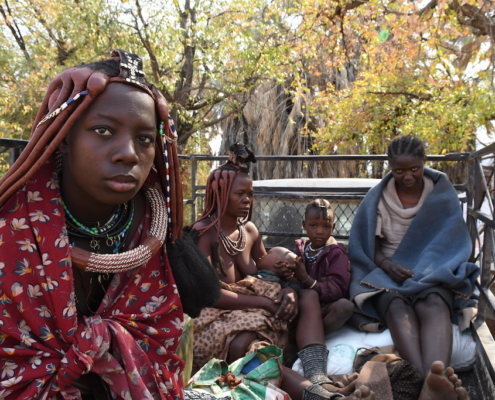
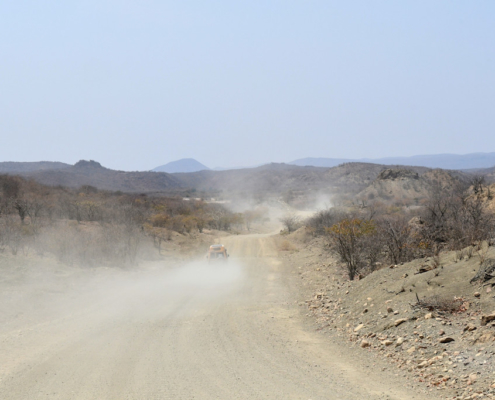
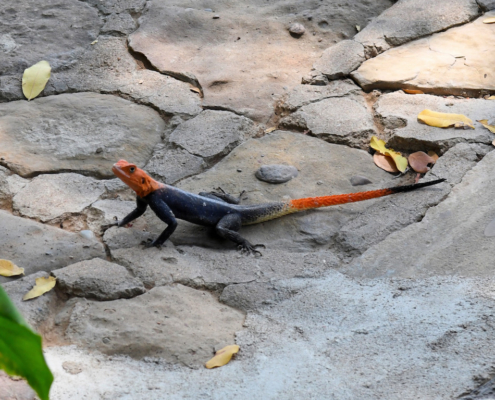
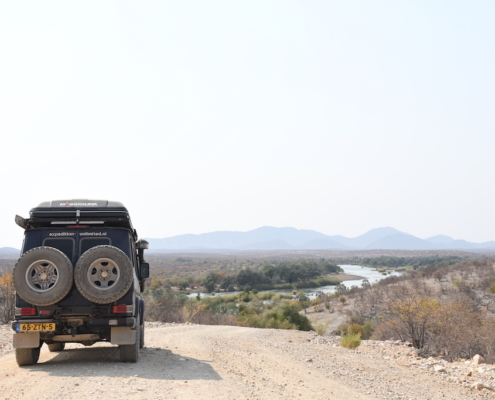

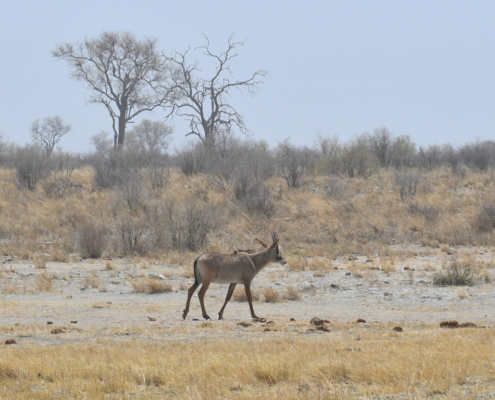



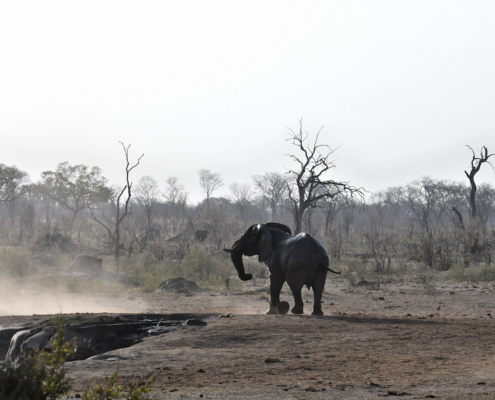
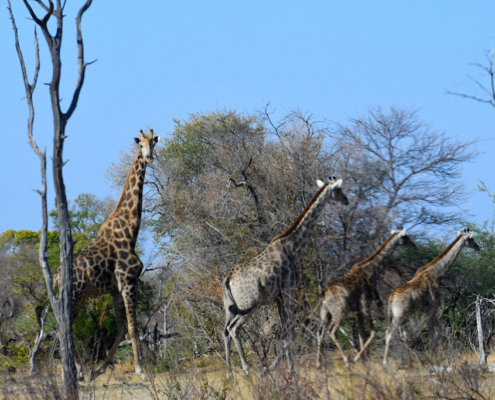
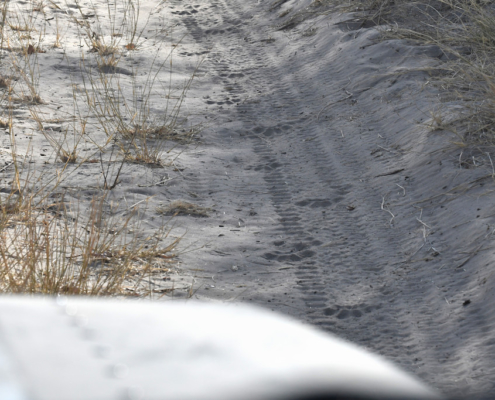
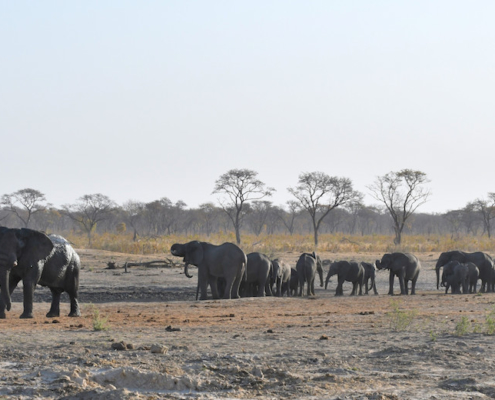
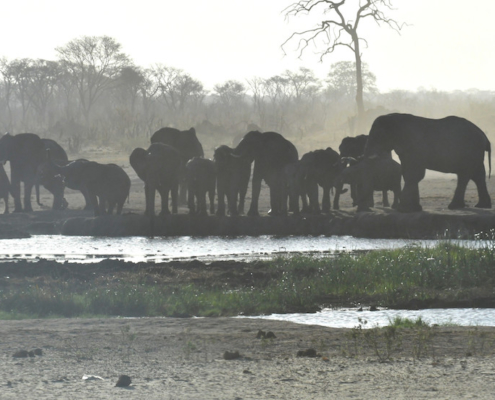

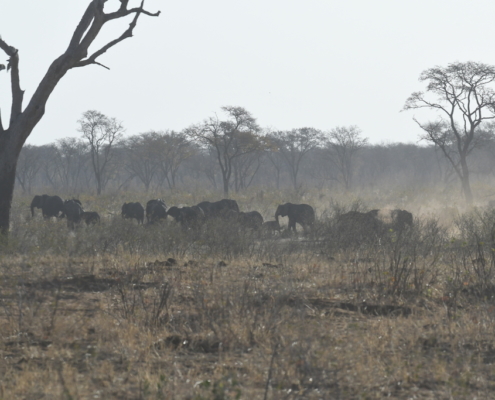
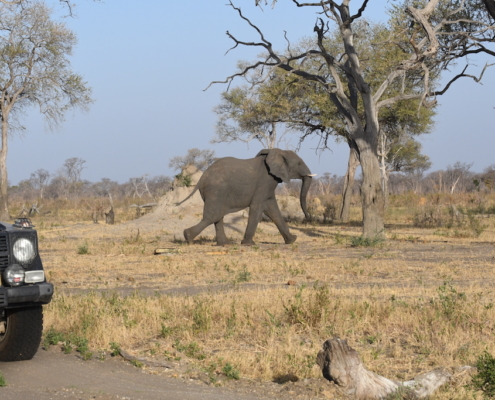
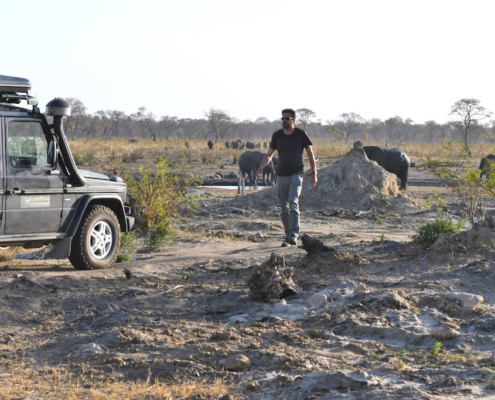
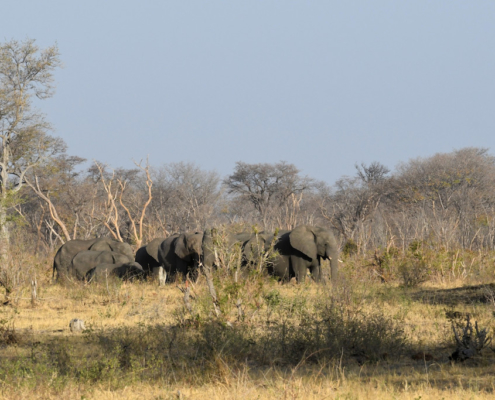

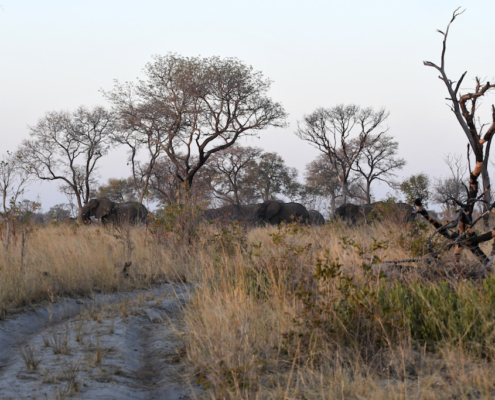
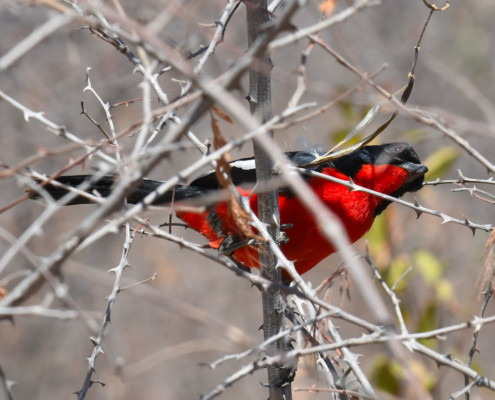
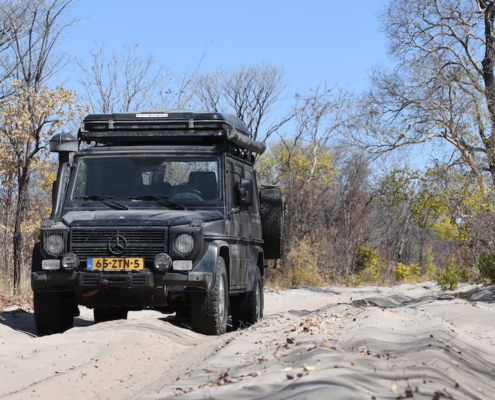

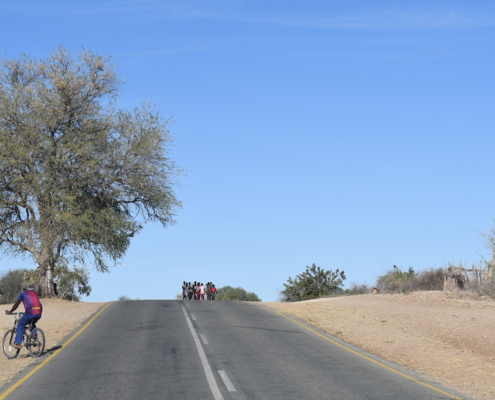


How cool, we once stood in front of the entrance of this beautiful park, but it had rained more than 10 cm in two days, and thought it was too tricky to drive in the mud pools ...
By the way, I just bought an old Hilux in Cape Town to do some touring!
Greetings and lots of fun!
Marco and Trudy
Then it was mud pools, now it was very deep sand where an average speed of 10 km was already a lot. But very worthwhile. We should have stayed here a little longer afterwards. Great that you have bought a car in ZA. Nothing better than driving through this region with a roof tent, but of course you already knew that :).
Greetings from a very hot Botswana.
What an adventure! Great travel report again, with beautiful photos.
This is completely what we had in mind. We are now in Botswana, and we have seen a lot again. We fully enjoy.
Greetings,
Ingrid & Onno
How recognizable and it keeps happening to you again… Fortunately, that is when the cold beer tastes the best.
Beautifully described, super fun to follow your experiences again.
The sundowners are indeed one of the most beautiful moments of the day, especially if you have seen so many beautiful things just before. We are now in Botswana and have just done the Chobe River front. Super beautiful. Now let's see how we can arrange the rest of Chobe in Kasane.
Greetings,
Ingrid & Onno
Onno and Ingrid are all very exciting
Elephants are beautiful animals, but so many at the same time is intense
Especially such a great matriarch.
Hi Annemari
Indeed, an exciting moment. We are now in Botswana, again very beautiful.
Do not know yet when we post another message, we must first have a rest day.
Greetings,
Onno & Ingrid